Fall 2022 Snapshots From Extension’s Pollinator Paradise Garden
go.ncsu.edu/readext?897898
en Español / em Português
El inglés es el idioma de control de esta página. En la medida en que haya algún conflicto entre la traducción al inglés y la traducción, el inglés prevalece.
Al hacer clic en el enlace de traducción se activa un servicio de traducción gratuito para convertir la página al español. Al igual que con cualquier traducción por Internet, la conversión no es sensible al contexto y puede que no traduzca el texto en su significado original. NC State Extension no garantiza la exactitud del texto traducido. Por favor, tenga en cuenta que algunas aplicaciones y/o servicios pueden no funcionar como se espera cuando se traducen.
Português
Inglês é o idioma de controle desta página. Na medida que haja algum conflito entre o texto original em Inglês e a tradução, o Inglês prevalece.
Ao clicar no link de tradução, um serviço gratuito de tradução será ativado para converter a página para o Português. Como em qualquer tradução pela internet, a conversão não é sensivel ao contexto e pode não ocorrer a tradução para o significado orginal. O serviço de Extensão da Carolina do Norte (NC State Extension) não garante a exatidão do texto traduzido. Por favor, observe que algumas funções ou serviços podem não funcionar como esperado após a tradução.
English
English is the controlling language of this page. To the extent there is any conflict between the English text and the translation, English controls.
Clicking on the translation link activates a free translation service to convert the page to Spanish. As with any Internet translation, the conversion is not context-sensitive and may not translate the text to its original meaning. NC State Extension does not guarantee the accuracy of the translated text. Please note that some applications and/or services may not function as expected when translated.
Collapse ▲In late 2008, I planted a demonstration pollinator garden at Chatham Mills to provide forage from early spring to late fall for pollinators such as honey bees, native bees, butterflies, flower flies, hummingbirds, beetles, and other beneficial insects. The garden features over 225 unique species of perennials, 85% of which are native to North Carolina. The garden is a great teaching tool that I use to conduct workshops and tours for hundreds of folks each year. It has taught me so much and I enjoy sharing this knowledge with others.
Below you can see photos of the pollinator garden from mid-September through mid-November. Each photo has a caption with details about the image.
Visit the Pollinator Garden website.
Click here for links to all the seasonal photo collections.

Golden-reined digger wasp on spotted horsemint. Photo by Debbie Roos.

Carolina anole on swamp rose mallow. Photo by Debbie Roos.
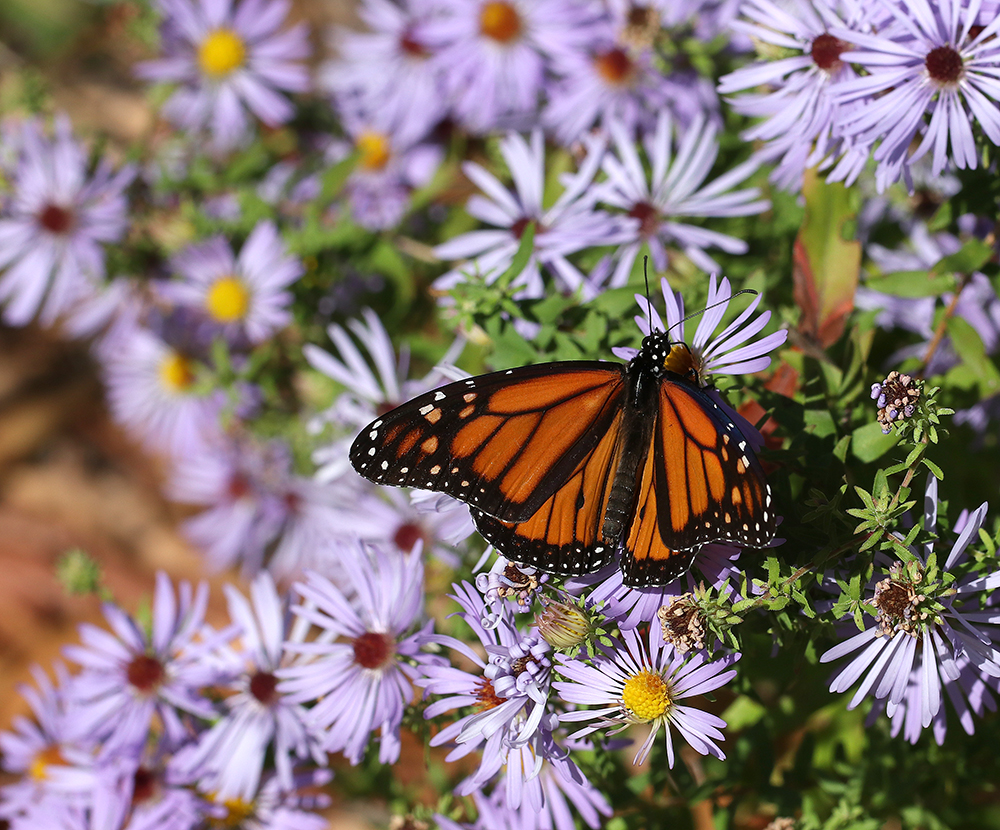
Monarch on skyblue aster. Photo by Debbie Roos.
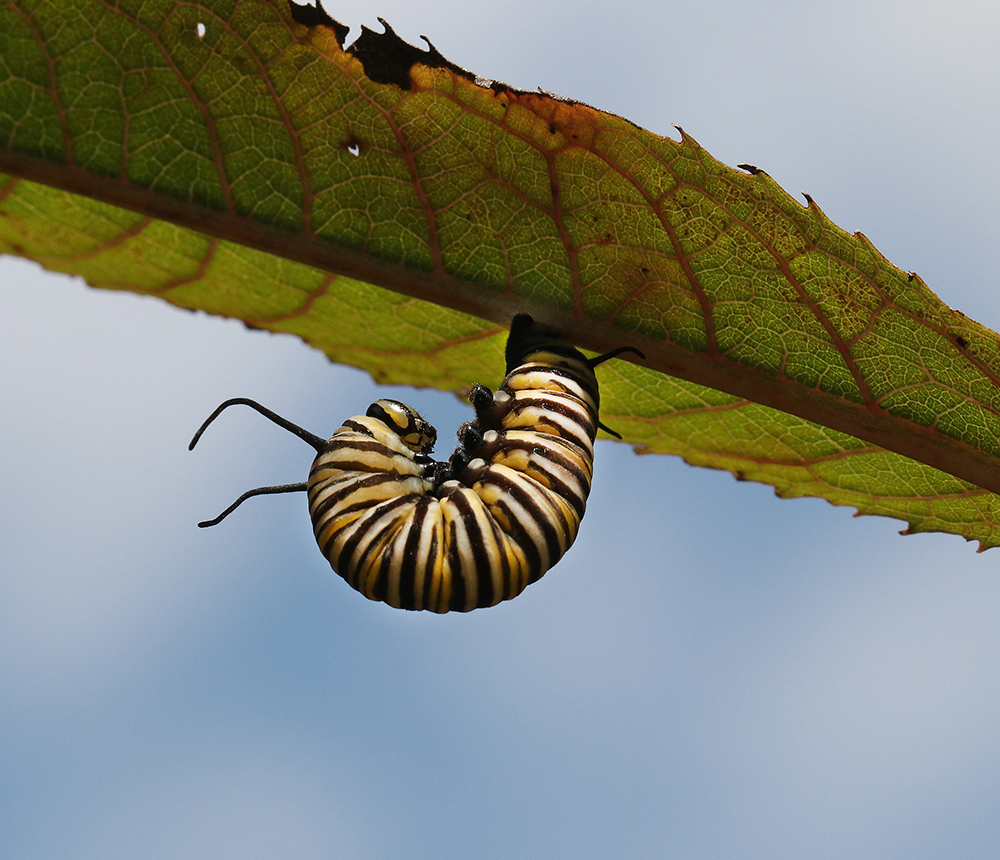
Monarch caterpillar preparing to pupate high up on giant ironweed. Photo by Debbie Roos.
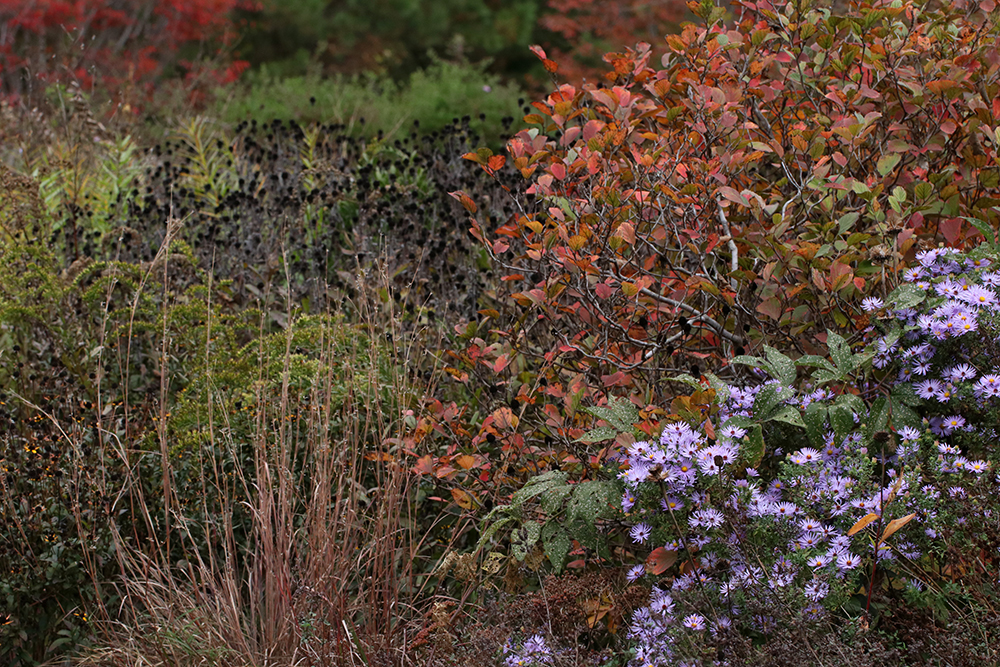
Fall color in one of the garden beds. Photo by Debbie Roos.

Blazing star seedheads with splitbeard bluestem and eastern silvery aster. Photo by Debbie Roos.
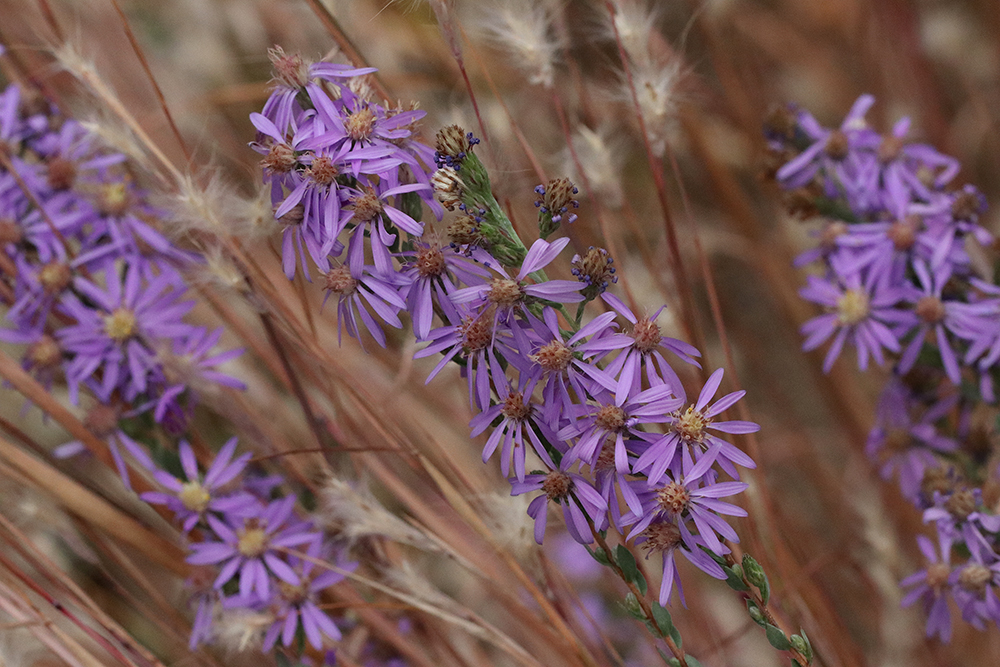
Eastern silvery aster with splitbeard bluestem. Photo by Debbie Roos.
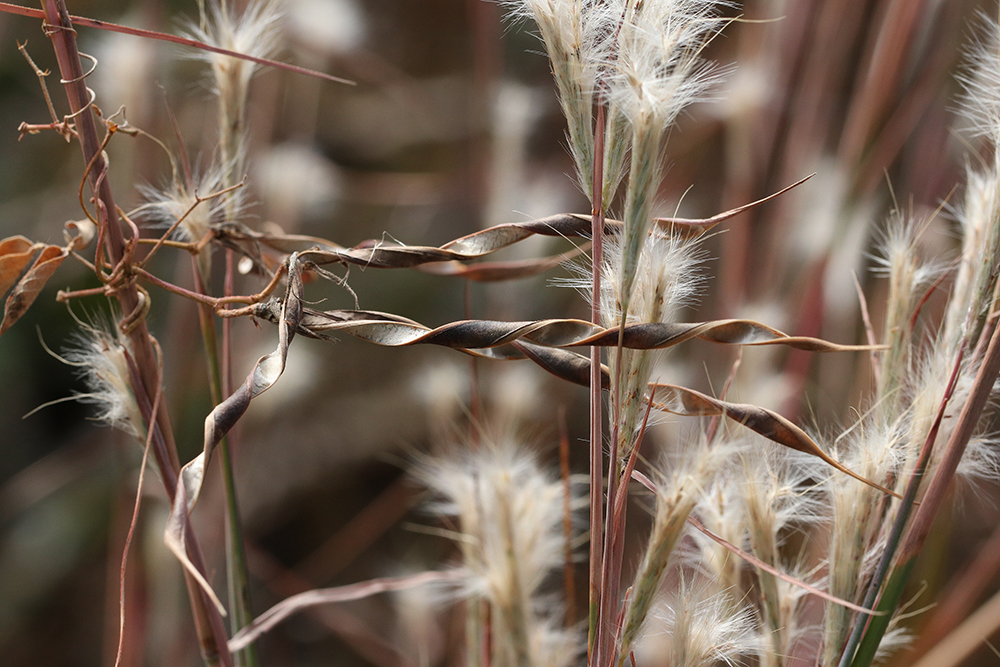
Spiral seedpods of spurred butterfly-pea vine with splitbeard bluestem. Photo by Debbie Roos.
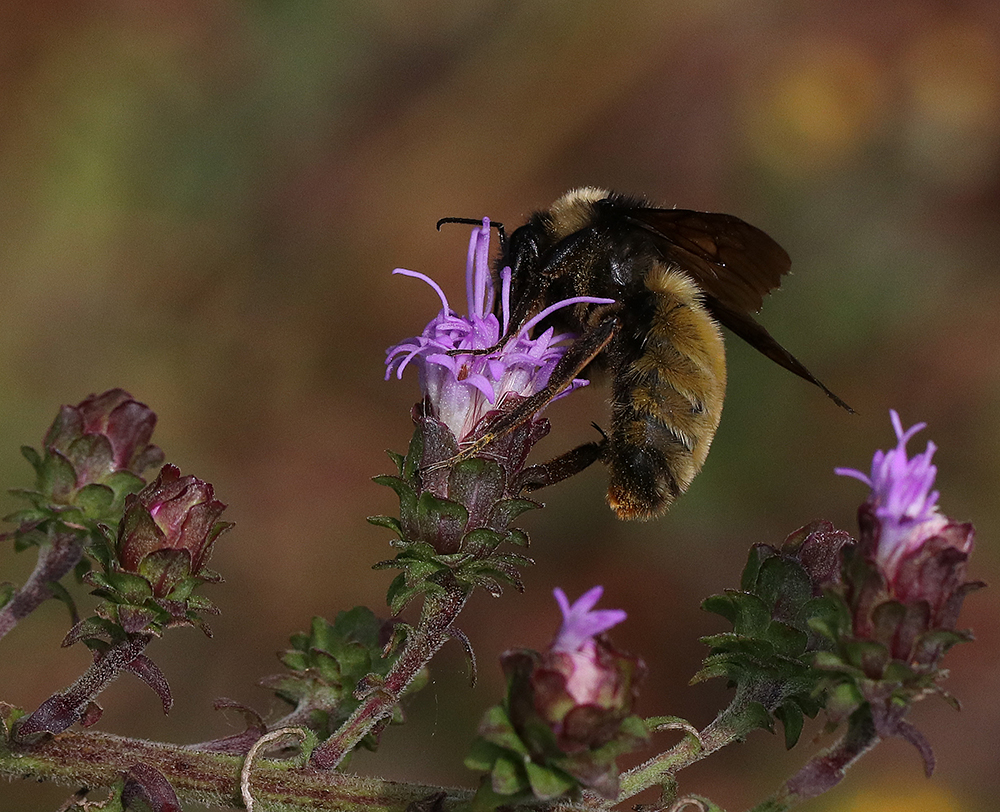
American bumble bee foraging on Appalachian blazing star. Photo by Debbie Roos.
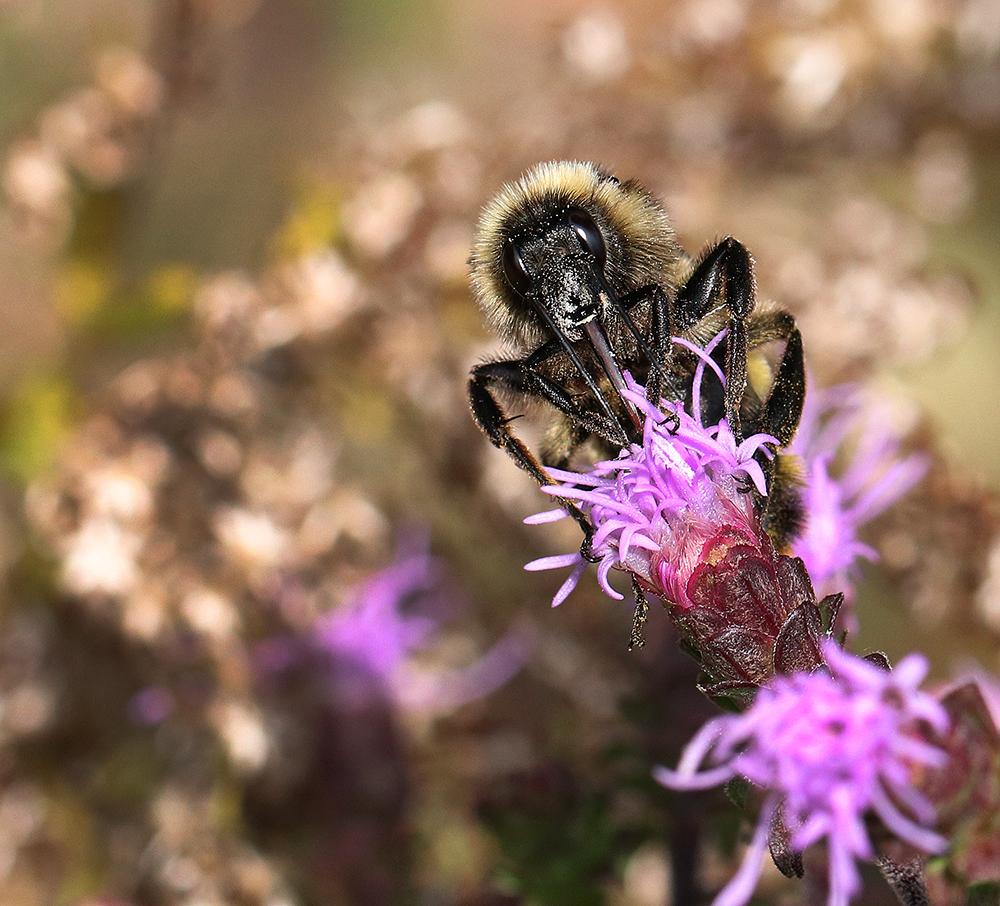
American bumble bee foraging on Appalachian blazing star. Photo by Debbie Roos.
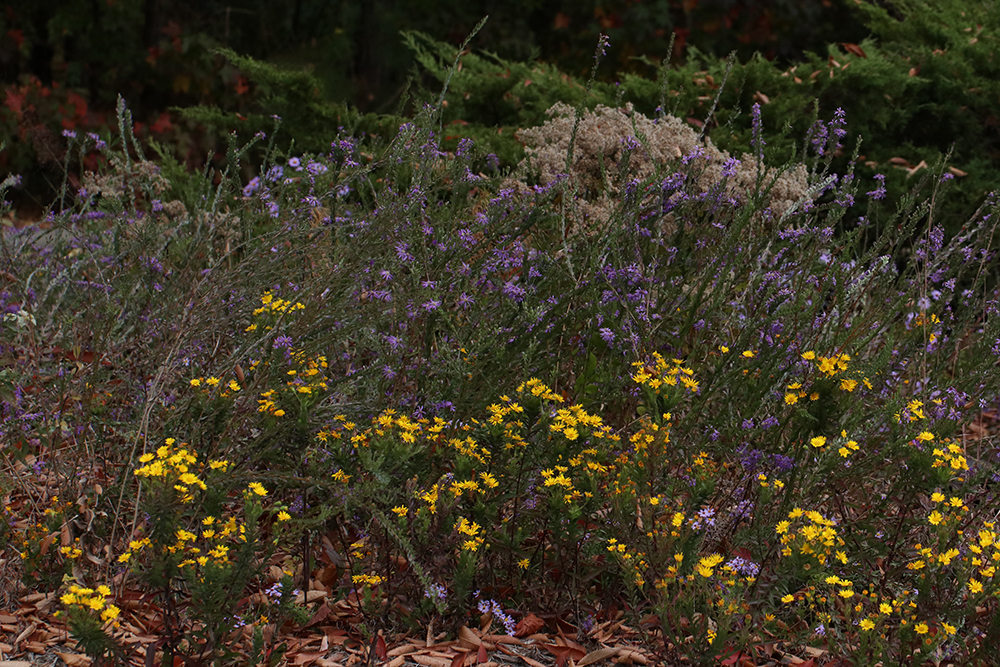
Maryland golden aster and eastern silvery aster. Photo by Debbie Roos.
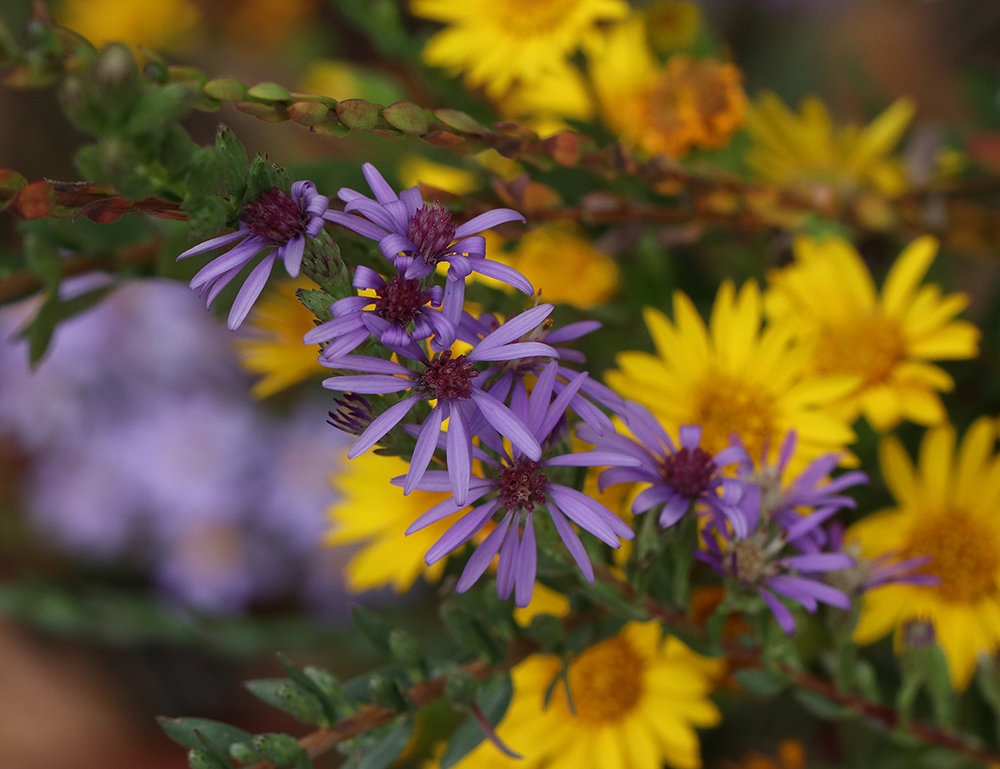
Eastern silvery aster with Maryland golden aster. Photo by Debbie Roos.

Fall layers. Photo by Debbie Roos.
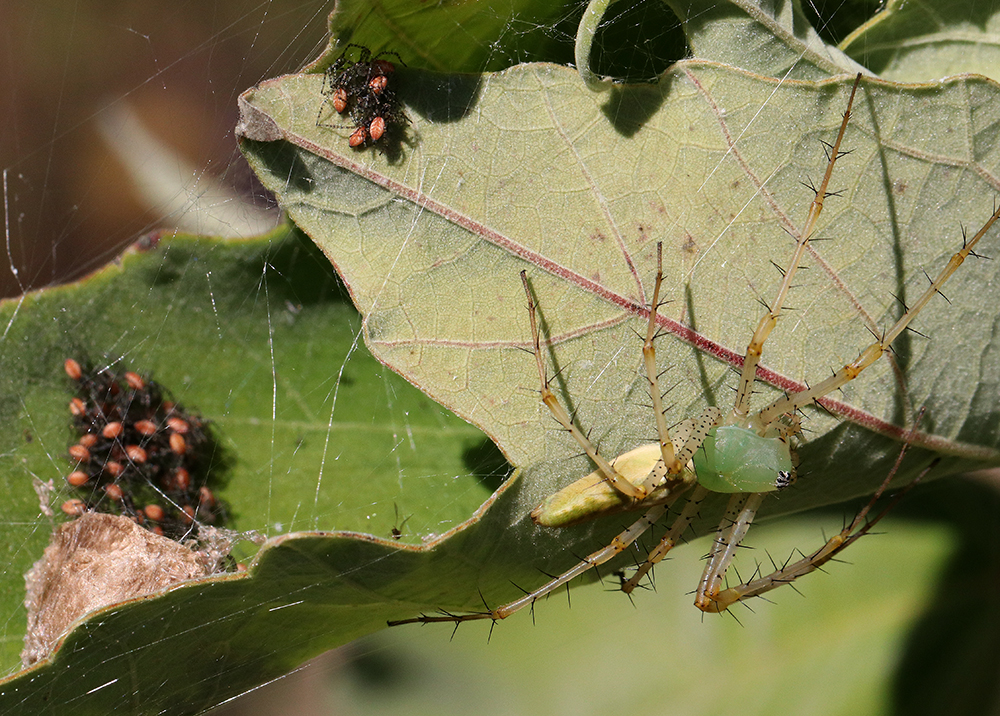
Green lynx spider with egg sac and spiderlings. Photo by Debbie Roos.
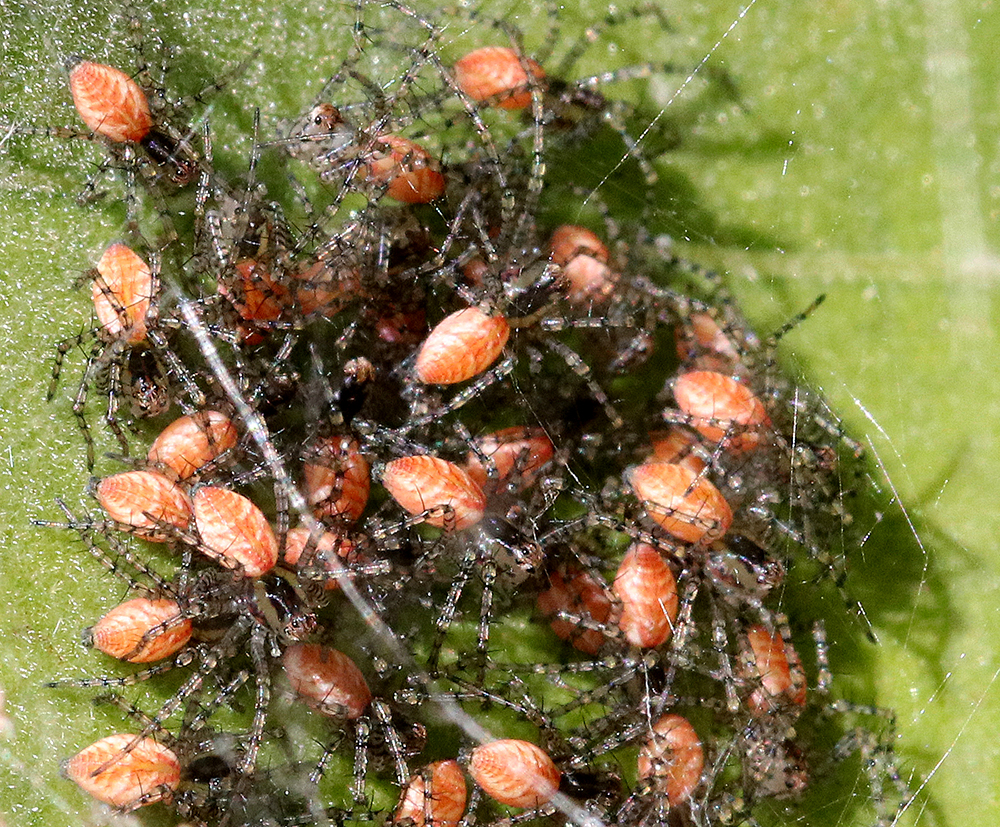
Newly emerged green lynx spiderlings. Photo by Debbie Roos.
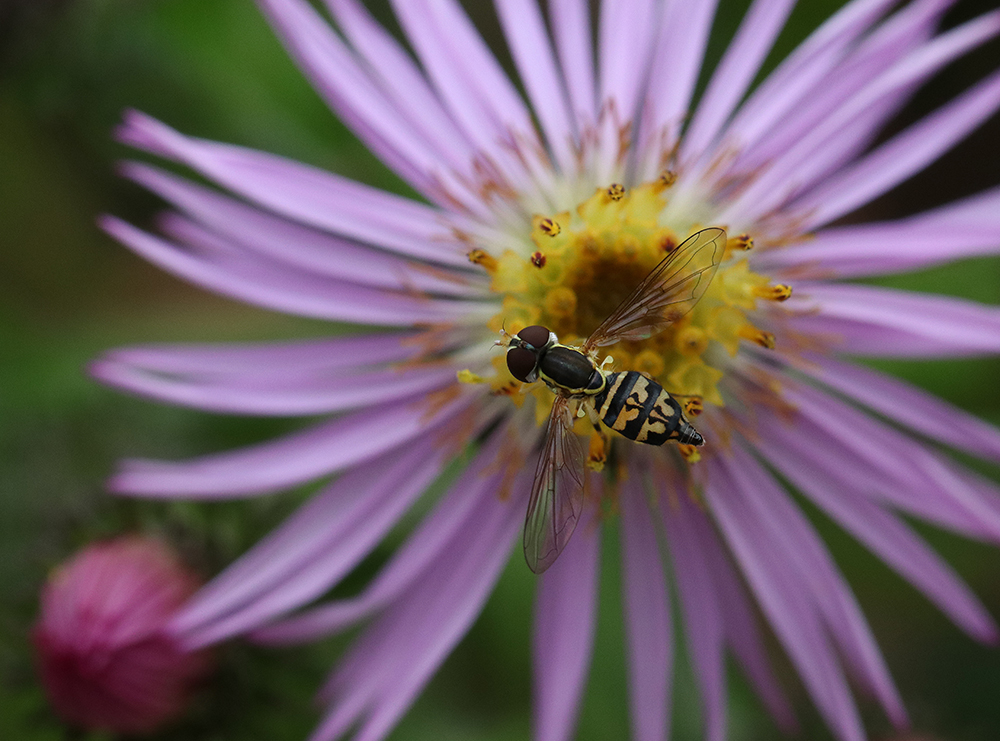
Calligrapher flower fly on climbing aster. Photo by Debbie Roos.
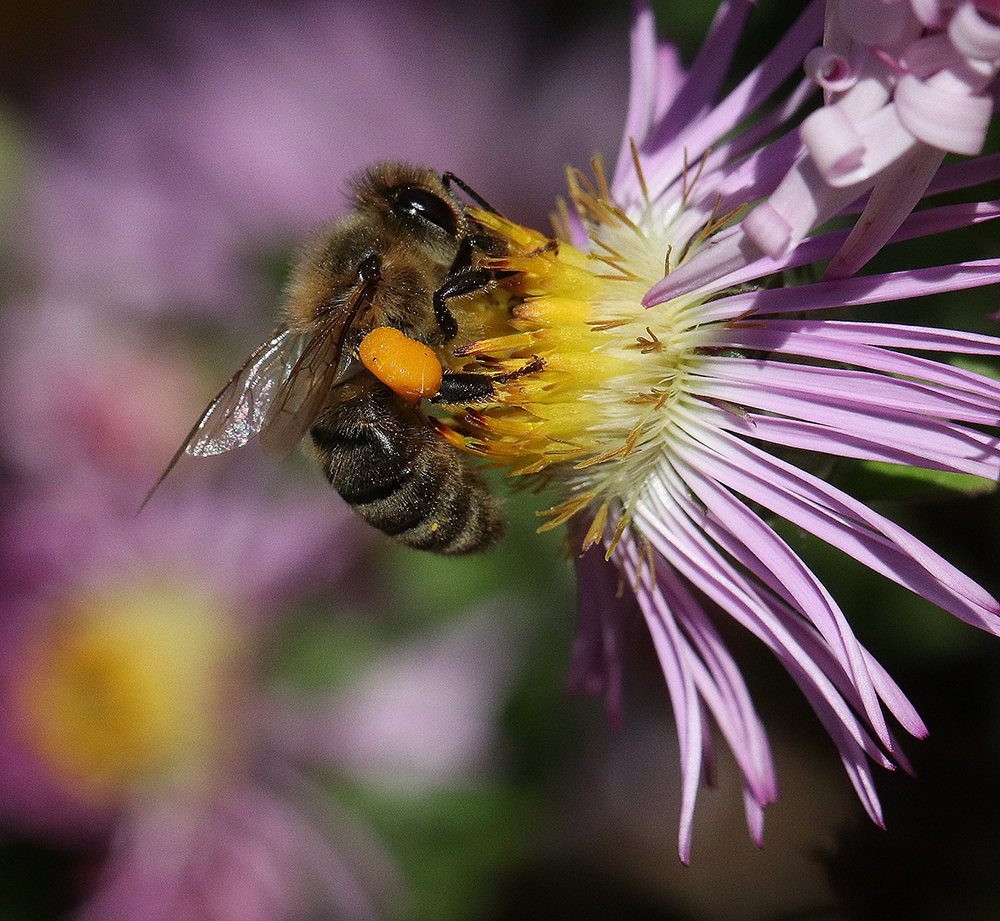
Honey bee on climbing aster. Photo by Debbie Roos.
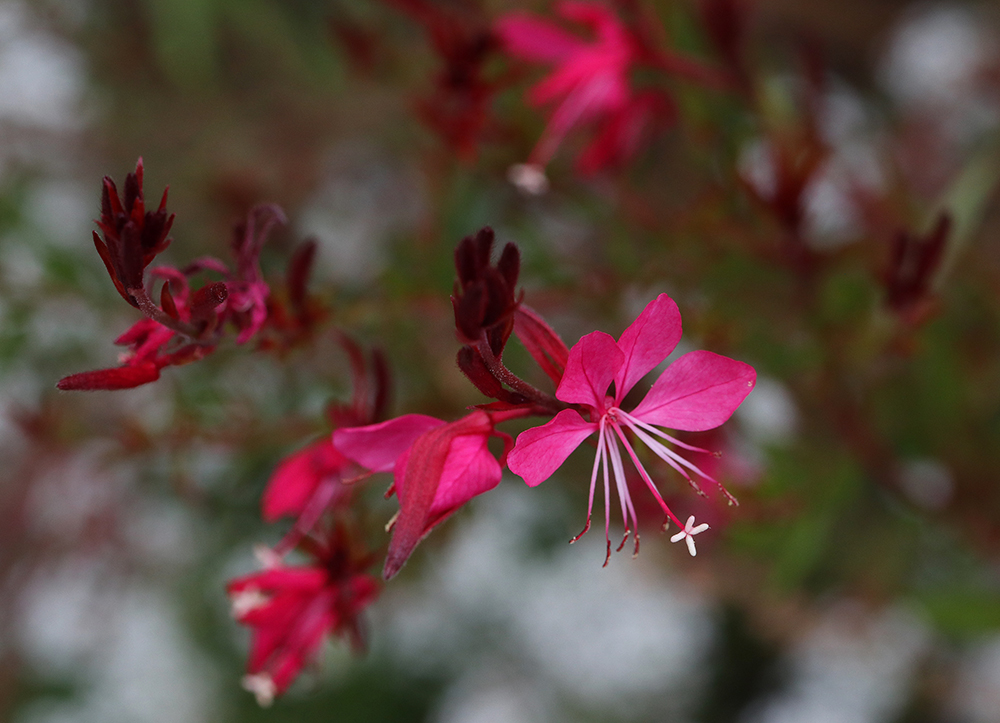
Spring-blooming ‘Belleza Dark Pink’ beeblossom reblooming in the fall. Photo by Debbie Roos.
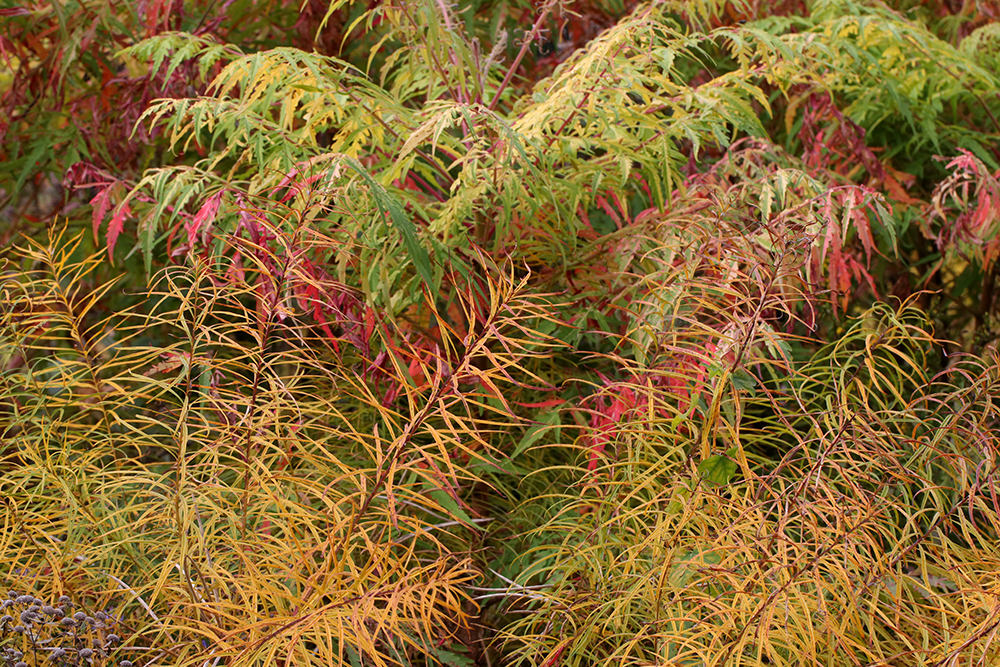
Staghorn sumac with bluestar. Photo by Debbie Roos.
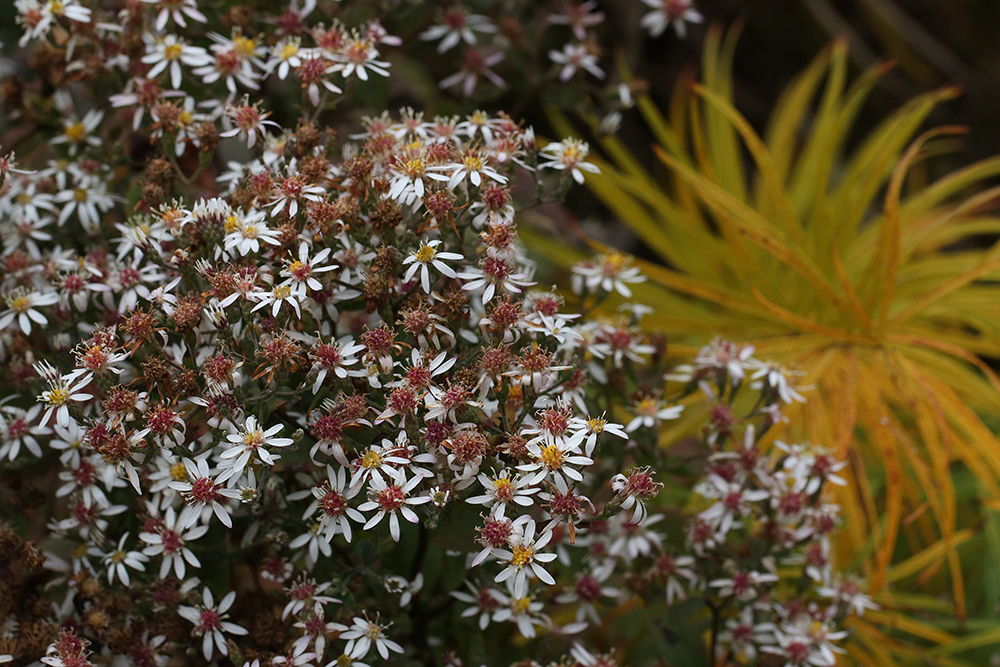
White wood aster with fall color showing on bluestar. Photo by Debbie Roos.
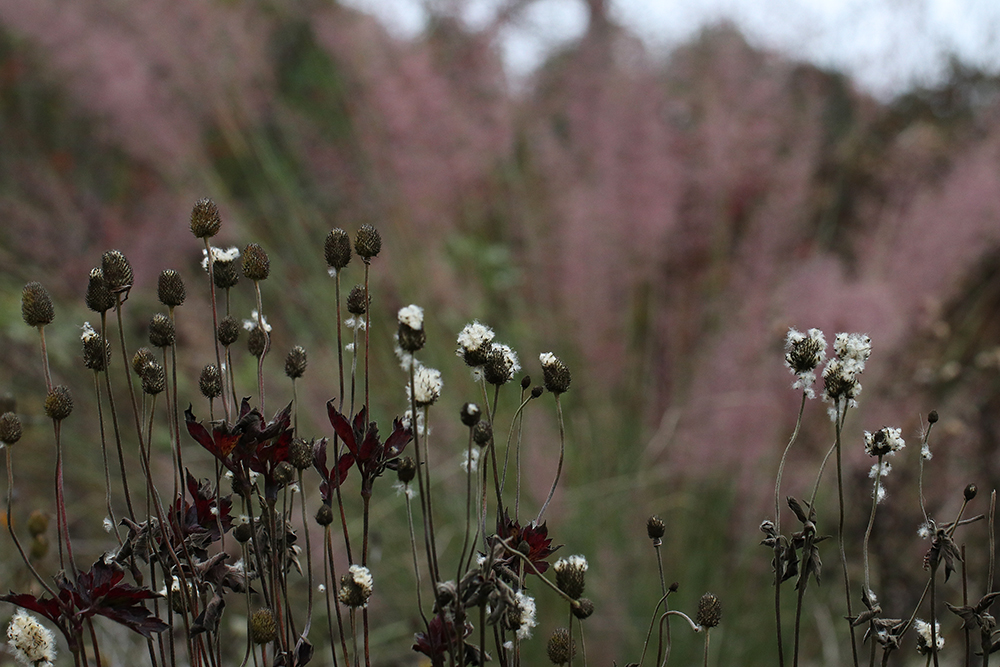
Cottony seedheads and ruby fall color of tall anemone backed by pink muhly grass. Photo by Debbie Roos.

American clasping aster and lanceleaf blanketflower. Photo by Debbie Roos.
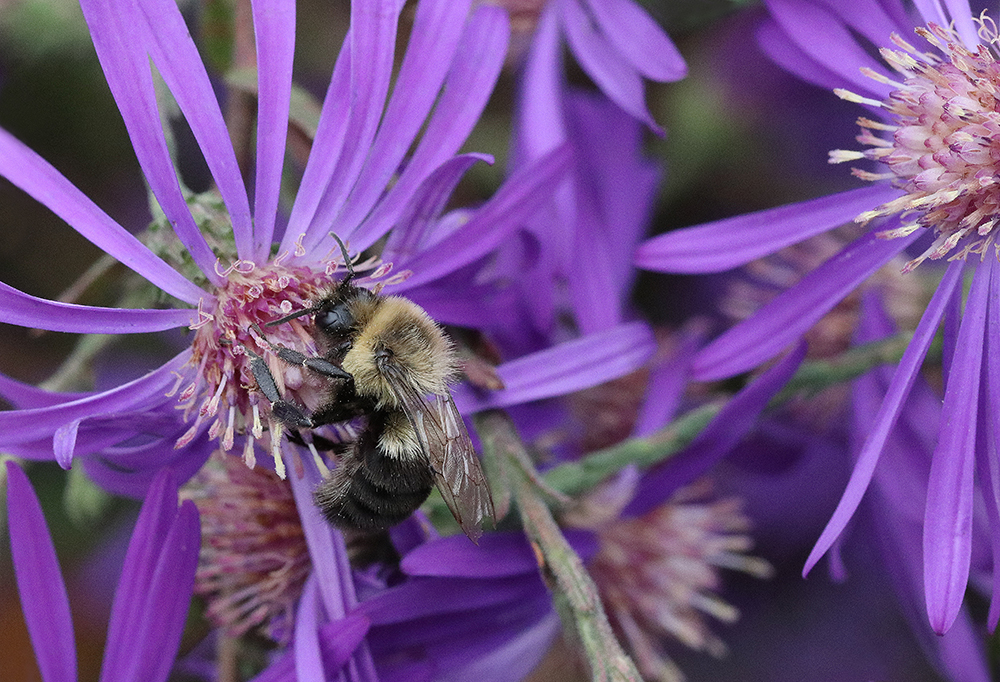
Bumble bee on Georgia aster. Photo by Debbie Roos.
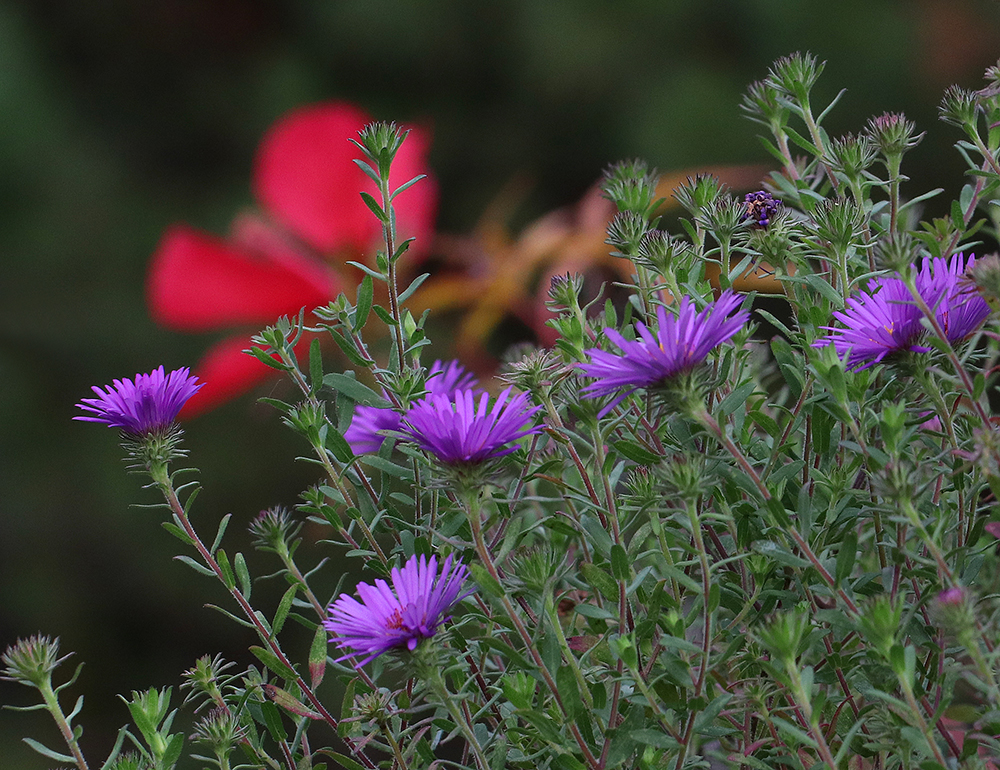
New England aster with rose mallow. Photo by Debbie Roos.


